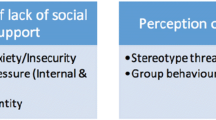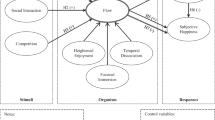Abstract
First Person Shooters are a genre of online games in which users demand a high interactivity, because the actions and the movements are very fast. They usually generate high rates of small packets which have to be delivered to the server within a deadline. When the traffic of a number of players shares the same link, these flows can be aggregated in order to save bandwidth. Certain multiplexing techniques are able to merge a number of packets, in a similar way to voice trunking, creating a bundle which is transmitted using a tunnel. In addition, the headers of the original packets can be compressed by means of standard algorithms. The characteristics of the buffers of the routers which deliver these bundled packets may have a strong influence on the network impairments (mainly delay, jitter and packet loss) which determine the quality of the game. A subjective quality estimator has been used in order to study the mutual influence of the buffer and multiplexing techniques. Taking into account that there exist buffers which size is measured in terms of bytes, and others measured in packets, both kinds of buffers have been tested, using different sizes. Traces from real game parties have been merged in order to obtain the traffic of 20 simultaneous players sharing the same Internet access. The delay and jitter produced by the buffer of the access router have been obtained using simulations. In general, the quality is expected to be reduced as the background traffic grows, but the results show an anomalous region in which the quality rises with the background traffic amount. Small buffers present better subjective quality results than bigger ones. When the total traffic amount gets above the available bandwidth, the buffers measured in bytes add to the packets a fixed delay, which grows with buffer size. They present a jitter peak when the offered traffic is roughly the link capacity. On the other hand, buffers which size is measured in packets add a smaller delay, but they increase packet loss for gaming traffic. The obtained results illustrate the need of knowing the characteristics of the buffer in order to make the correct decision about traffic multiplexing. As a conclusion, it would be interesting for game developers to identify the behaviour of the router buffer so as to adapt the traffic to it.


















Similar content being viewed by others
References
Appenzeller G, Keslassy I, McKeown N (2004) Sizing router buffers. In Computer Communication Review, New York, USA. ACM Press, pp. 281–292
AT&T Global IP Network, http://ipnetwork.bgtmo.ip.att.net/pws, Accessed 3 Feb. 2012.
Batool SH, Mahmood K (2010) Entertainment communication or academic use? A survey of Internet cafe users in Lahore, Pakistan. Inf Dev 26:141–147
Cooperative Association for Internet Data Analysis: NASA Ames Internet Exchange Packet Length Distributions
Dick M, Wellnitz O, Wolf L (2005) Analysis of factors affecting players’ performance and perception in multiplayer games. In Proceedings 4th ACM SIGCOMM Workshop on Network and system support for games (NetGames ‘05). ACM, New York, NY, USA, pp 1–7
Dischinger M, Haeberlen A, Gummadi K.P, Saroiu S (2007) Characterizing residential broadband networks. Proceedings 7th ACM SIGCOMM Conference on Internet measurement (IMC ‘07). ACM, New York, NY, USA, pp. 43–56
Enachescu M, Ganjali Y, Goel A, McKeown N, Roughgarden T (2005) Part III: routers with very small buffers. SIGCOMM Comput Commun Rev 35(3):83–90
Feng W, Chang F, Feng W, Walpole J (2005) A traffic characterization of popular on-line games. IEEE/ACM Trans Netw 13(3):488–500
Furuholt B, Kristiansen S, Wahid F (2008) Gaming or gaining? Comparing the use of Internet cafes in Indonesia and Tanzania. The Internet Inf Libr Rev 40(2):129–139
Gurol M, Sevindik T (2007) Profile of Internet Cafe users in Turkey. Telematics Inform 24(1):59–68
ITU-T Recommendation G.107 (2011) The E-model, a computational model for use in transmission planning
Kaune S, Pussep K, Leng C, Kovacevic A, Tyson G, Steinmetz R (2009) Modeling the internet delay space based on geographical locations. In Proceedings of the 2009 17th Euromicro International Conference on Parallel, Distributed and Network-based Processing (PDP ‘09). IEEE Computer Society, Washington, DC, USA, pp. 301–310
Koren T, Casner S, Geevarghese J, Thompson B, Ruddy P (2003) RFC 3545, Enhanced Compressed RTP (CRTP) for Links with High Delay, Packet Loss and Reordering, Jul
Nuaymi L, Bouida N, Lahbil N, Godlewski P (2007) Headers Overhead Estimation, Header Suppression and Header Compression in WiMAX. In Proceedings Wireless and Mobile Computing, Networking and Communications, 2007. WiMOB 2007. Third IEEE International Conference on, p 17
Oliveira M, Henderson T (2003) What online gamers really think of the Internet?. In Proceedings of the 2nd Workshop on Network and system support for games (NetGames ‘03). ACM, New York, NY, USA, pp 185–193
Palazzi CE, Ferretti S, Roccetti M, Pau G, Gerla M (2006) What’s in that Magic Box? The Home Entertainment Center’s Special Protocol Potion, Revealed, IEEE Transactions on Consumer Electronics. IEEE Consum Electron Soc 52(4):1280–1288
Pazhyannur R, Ali I, Fox C (2001) PPP Multiplexing (PPPMux), RFC 3153, Aug
Pereira R.M, Tarouco L.M (2009) Adaptive Multiplexing Based on E-model for Reducing Network Overhead in Voice over IP Security Ensuring Conversation Quality. In Proceedings Fourth international Conference on Digital Telecommunications, Washington DC, pp 53–58
Ries M, Svoboda P, Rupp M (2008) Empirical study of subjective quality for Massive Multiplayer Games. Systems, Signals and Image Processing, 2008. In Proceedings IWSSIP 2008. 15th International Conference on, pp 181–184
Saldana J, Fernandez-Navajas J, Ruiz-Mas J, Aznar J.I, Viruete E, Casadesus L (2011) Influence of the Router Buffer on Online Games Traffic Multiplexing. In Proceedings International Symposium on Performance Evaluation of Computer and Telecommunications Systems SPECTS 2011, The Hague, Netherlands, pp 253–258
Saldana J, Fernández-Navajas J, Ruiz-Mas J, Aznar JI, Viruete E, Casadesus L (2011) First person shooters: can a smarter network save bandwidth without annoying the players? IEEE Commun Mag Consum Commun Netw Ser 49(11):190–198
Saldana J, Murillo J, Fernandez-Navajas J, Ruiz-Mas J, Aznar J.I, Viruete E (2011) Bandwidth Efficiency Improvement for Online Games by the use of Tunneling, Compressing and Multiplexing Techniques. In Proceedings Int. Symp. Performance Evaluation of Computer and Telecommunications Systems SPECTS 2011, The Hague, Netherlands, pp 227–234
Saldana J, Murillo J, Fernandez-Navajas J, Ruiz-Mas J, Viruete, E, Aznar, J.I (2011) Evaluation of Multiplexing and Buffer Policies Influence on VoIP Conversation Quality. In Proceedings CCNC 2011-3rd IEEE Workshop on Digital Entertainment, Networked Virtual Environments and Creative Technology (DENVECT), Las Vegas, pp 1147–1151
Saldana J, Murillo J, Fernandez-Navajas J, Ruiz-Mas J, Viruete E, Aznar JI (2011) QoS and Admission Probability Study for a SIP-Based Central Managed IP Telephony System. In Proceedings New Technologies, Mobility and Security (NTMS), 2011 4th IFIP International Conference
Saldana J, Wing D, Fernandez-Navajas J, Ruiz-Mas J, Perumal M. A.M., Camarillo G (2012) Widening the Scope of a Standard: Real Time Flows Tunneling, Compressing and Multiplexing. In Proceedings IEEE ICC 2012, Workshop on Telecommunications: from Research to Standards, June 10–11, 2012, Ottawa, Canada
Schaefer C, Enderes T, Ritter H, Zitterbart M (2002) Subjective quality assessment for multiplayer real-time games. In Proceedings 1st Workshop on Network and system support for games (NetGames '02). ACM, New York, NY, USA, pp 74–78
Sommers J, Barford P, Greenberg A, Willinger W (2008) An SLA perspective on the router buffer sizing problem. SIGMETRICS Perform Eval Rev 35(4):40–51
Stewart L, Branch P (2006) HLCS, Map: dedust, 5 players, 13Jan2006. Centre for Advanced Internet Architectures SONG Database, http://caia.swin.edu.au/sitcrc/hlcs_130106_1_dedust_5_fragment.tar.gz, Accessed 5 April 2011
Suznjevic M, Stupar I, Matijasevic M (2011) Traffic modeling of player action categories in a MMORPG. In Proceedings of 4th International Conference on Simulation Tools and Techniques (SIMUTools) 2011, Barcelona, Spain
Sze H, Liew C, Lee J, Yip D (2002) A multiplexing scheme for H.323 Voice-Over-IP applications. IEEE J Sel Areas Commun 20:1360–1368
Thompson B, Koren T, Wing D (2005) RFC 4170: Tunneling Multiplexed Compressed RTP (TCRTP), Nov
Trad A, Afifi H (2003) Adaptive Multiplexing Scheme for Voice Flow Transmission Across Best-Effort IP Networks. INRIA Research Report 4929
Ubicom White Paper (2005) OPScore, or Online Playability Score: A Metric for Playability of Online Games with Network Impairments. http://www.kevingee.biz/wp-content/uploads/2011/04/IP3K-DWP-OPSCORE-10.pdf, Accessed 3 Feb. 2012
Vishwanath A, Sivaraman V (2008) Routers with Very Small Buffers: Anomalous Loss Performance for Mixed Real-Time and TCP Traffic. In Proceedings IEEE IWQoS, Enschede, The Netherlands, Jun. 2008, pp 80–89
Vishwanath A, Sivaraman V, Rouskas GN (2009) Considerations for Sizing Buffers in Optical Packet Switched Networks. In IEEE INFOCOM 2009, Brazil
Vishwanath A, Sivaraman V, Thottan M (2009) Perspectives on router buffer sizing: recent results and open problems. SIGCOMM Comput Commun Rev 39(2):34–39
Wattimena A.F, Kooij R.E, van Vugt J.M, Ahmed O.K (2006) Predicting the perceived quality of a first person shooter: the Quake IV G-model. In Proceedings 5th SIGCOMM workshop on Network and system support for games (NetGames ‘06), ACM, New York, NY, USA
Yu J, Al-Ajarmeh I (2007) Call Admission Control and Traffic Engineering of VoIP. In Proceedings Second International Conference on Digital Telecommunications. IEEE ICDT, San Jose, p 11
Zander S, Armitage G (2004) Empirically measuring the QoS sensitivity of interactive online game players. In Proceedings of the Australian Telecommunications Networks and Applications Conference 2004 (Bondi Beach, Sydney, Australia, Dec. 8–10). ATNAC, Australia, 2004, pp 511–518
Author information
Authors and Affiliations
Corresponding author
Additional information
Note
A preliminary version of this work was published in “The Effect of Router Buffer Size on Subjective Gaming Quality Estimators based on Delay and Jitter,” Proceedings CCNC 2012- 4th IEEE International Workshop on Digital Entertainment, Networked Virtual Environments, and Creative Technology (DENVECT), pp. 502–506, Las Vegas. Jan 2012. Some other parts were published in the article “Influence of Online Games Traffic Multiplexing and Router Buffer on Subjective Quality,” in pp. 482–486 of the Proceedings of the same Workshop. This work has been partially financed by CPUFLIPI Project (MICINN TIN2010-17298), MBACToIP Project, of Aragon I + D Agency and Ibercaja Obra Social, and NDCIPI-QQoE Project of Catedra Telefonica, Univ. of Zaragoza.
Rights and permissions
About this article
Cite this article
Saldana, J., Fernández-Navajas, J., Ruiz-Mas, J. et al. Online FPS games: effect of router buffer and multiplexing techniques on subjective quality estimators. Multimed Tools Appl 71, 1823–1856 (2014). https://doi.org/10.1007/s11042-012-1309-4
Published:
Issue Date:
DOI: https://doi.org/10.1007/s11042-012-1309-4




